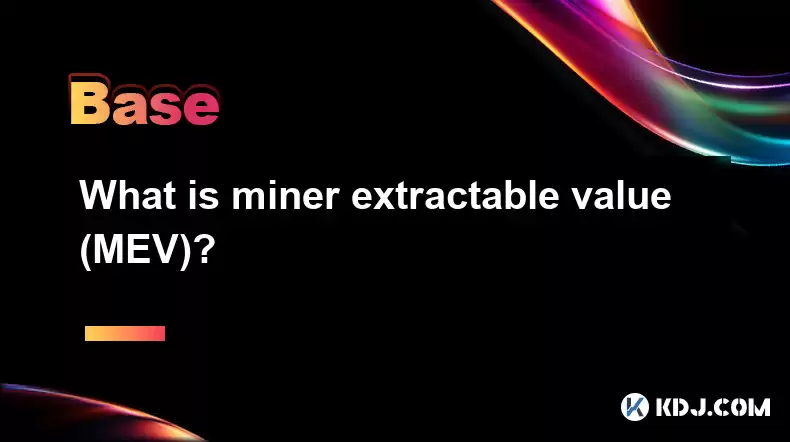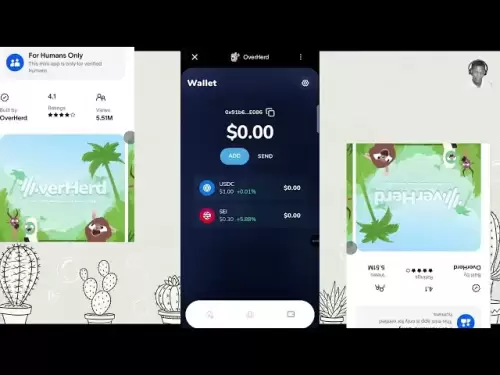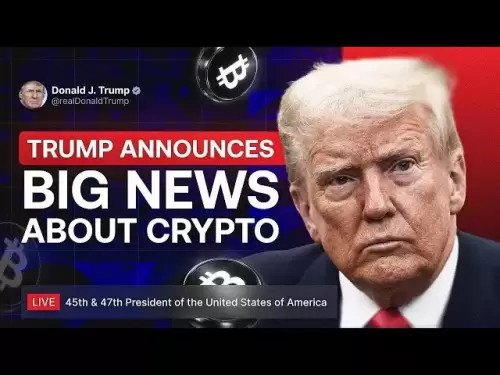-
 Bitcoin
Bitcoin $113400
-0.78% -
 Ethereum
Ethereum $3572
-2.11% -
 XRP
XRP $2.908
-4.07% -
 Tether USDt
Tether USDt $0.9999
0.00% -
 BNB
BNB $751.0
-1.27% -
 Solana
Solana $162.3
-3.12% -
 USDC
USDC $0.9998
-0.01% -
 TRON
TRON $0.3319
-0.54% -
 Dogecoin
Dogecoin $0.1963
-4.68% -
 Cardano
Cardano $0.7128
-4.47% -
 Hyperliquid
Hyperliquid $37.14
-2.57% -
 Stellar
Stellar $0.3858
-4.90% -
 Sui
Sui $3.341
-3.86% -
 Bitcoin Cash
Bitcoin Cash $554.6
-1.94% -
 Chainlink
Chainlink $16.10
-3.77% -
 Hedera
Hedera $0.2338
-4.24% -
 Ethena USDe
Ethena USDe $1.001
0.00% -
 Avalanche
Avalanche $21.66
-4.72% -
 Litecoin
Litecoin $117.8
-2.92% -
 UNUS SED LEO
UNUS SED LEO $9.002
0.08% -
 Toncoin
Toncoin $3.156
-6.13% -
 Shiba Inu
Shiba Inu $0.00001192
-3.09% -
 Uniswap
Uniswap $9.411
-3.25% -
 Polkadot
Polkadot $3.562
-2.50% -
 Dai
Dai $0.9999
0.00% -
 Monero
Monero $288.9
-4.05% -
 Bitget Token
Bitget Token $4.274
-1.88% -
 Cronos
Cronos $0.1362
-1.79% -
 Pepe
Pepe $0.0...09999
-4.55% -
 Aave
Aave $252.7
-2.97%
What is miner extractable value (MEV)?
Miners can boost profits via MEV by manipulating transaction order, but this may lead to higher fees and centralization pressures on blockchain networks.
Apr 10, 2025 at 03:57 am

Miner Extractable Value (MEV) is a concept that has gained significant attention within the cryptocurrency ecosystem, particularly in the context of blockchain networks like Ethereum. MEV refers to the profit that miners can extract from a blockchain by reordering, including, or excluding transactions within the blocks they mine. This phenomenon arises due to the decentralized and open nature of blockchain systems, where miners have the power to influence the order and inclusion of transactions.
Understanding the Basics of MEV
At its core, MEV is about the potential financial gain that miners can achieve by manipulating the transaction order in a block. This manipulation can lead to various strategies, such as front-running, back-running, and transaction censorship. Miners can prioritize transactions that offer higher fees or those that can be exploited for arbitrage opportunities, thereby increasing their profits beyond the standard block reward and transaction fees.
Types of MEV Strategies
There are several strategies that miners and other actors can employ to extract value from the blockchain. Some of the most common include:
Front-Running: This involves miners or bots detecting a pending transaction and quickly submitting a similar transaction with a higher fee to be included before the original one. This is often seen in decentralized finance (DeFi) platforms where traders attempt to capitalize on price movements.
Back-Running: In contrast to front-running, back-running involves placing a transaction immediately after a known transaction to benefit from the price impact of the preceding transaction. This is commonly used in arbitrage scenarios where a trader can profit from the price difference between two assets.
Transaction Censorship: Miners can choose to exclude certain transactions from a block, either to prevent a competitor from benefiting or to comply with regulatory demands. This can be particularly impactful in scenarios where timely transaction processing is crucial.
Liquidation Attacks: In DeFi, miners can manipulate the order of transactions to trigger liquidations of collateralized positions, thereby profiting from the resulting price movements.
Impact of MEV on the Blockchain Ecosystem
The presence of MEV has significant implications for the overall health and fairness of blockchain networks. It can lead to increased transaction fees as users compete to have their transactions included in blocks. Additionally, MEV can create centralization pressures, as miners with more computational power or better access to MEV opportunities can gain disproportionate profits.
Moreover, MEV can affect the security and decentralization of the network. If miners prioritize MEV over the standard block reward, it could lead to a scenario where the network's consensus mechanism is compromised. This is particularly concerning in proof-of-stake systems, where validators might be more inclined to engage in MEV strategies due to lower energy costs.
Mitigating the Effects of MEV
To address the challenges posed by MEV, various solutions and protocols have been proposed and implemented. Some of the notable approaches include:
Fair Ordering Protocols: These protocols aim to ensure that transactions are ordered in a way that minimizes the potential for MEV. For example, the Ethereum community has explored solutions like MEV-Boost, which allows miners to auction off the right to include transactions in a block, potentially reducing the incentive for MEV.
Layer 2 Solutions: By moving transactions off the main blockchain and onto layer 2 networks, the impact of MEV can be reduced. Solutions like Optimistic Rollups and ZK-Rollups can help mitigate the effects of MEV by batching transactions and reducing the visibility of individual transaction details.
Decentralized Exchanges (DEXs) and DeFi Protocols: Some DEXs and DeFi platforms have implemented mechanisms to protect against MEV, such as time-weighted average price (TWAP) orders and batch auctions. These mechanisms aim to reduce the predictability of transaction outcomes, making it harder for miners to exploit MEV opportunities.
Real-World Examples of MEV
To illustrate the practical implications of MEV, consider the following examples:
DeFi Arbitrage: In the DeFi space, arbitrageurs often use MEV strategies to profit from price discrepancies between different decentralized exchanges. By front-running or back-running transactions, they can buy assets at a lower price on one exchange and sell them at a higher price on another, all within the same block.
Flash Loans: Flash loans, which are uncollateralized loans that must be repaid within the same transaction, are often used in conjunction with MEV strategies. Traders can borrow large sums of money to execute complex arbitrage or liquidation strategies, all within the span of a single block.
NFT Auctions: In the non-fungible token (NFT) market, MEV can be used to manipulate auction outcomes. Miners can front-run bids to outbid competitors at the last moment, ensuring they win the auction at the lowest possible price.
Frequently Asked Questions
Q: How does MEV affect the average user of a blockchain network?
A: For the average user, MEV can lead to higher transaction fees as they compete with others to have their transactions included in blocks. Additionally, users may experience delays or reordering of their transactions, which can be particularly problematic in time-sensitive applications like DeFi.
Q: Can MEV be completely eliminated from blockchain networks?
A: While it is challenging to completely eliminate MEV, various protocols and solutions can mitigate its impact. Fair ordering protocols, layer 2 solutions, and protective mechanisms in DeFi platforms can all help reduce the prevalence of MEV.
Q: How do miners benefit from MEV, and what are the risks involved?
A: Miners benefit from MEV by earning additional profits beyond the standard block reward and transaction fees. However, engaging in MEV strategies can also pose risks, such as increased competition from other miners and potential backlash from the community if their actions are seen as unfair or manipulative.
Q: Are there any ethical concerns associated with MEV?
A: Yes, there are ethical concerns related to MEV, particularly around fairness and centralization. If miners prioritize MEV over the standard block reward, it can lead to a more centralized network where only a few actors benefit, potentially undermining the decentralized ethos of blockchain technology.
Disclaimer:info@kdj.com
The information provided is not trading advice. kdj.com does not assume any responsibility for any investments made based on the information provided in this article. Cryptocurrencies are highly volatile and it is highly recommended that you invest with caution after thorough research!
If you believe that the content used on this website infringes your copyright, please contact us immediately (info@kdj.com) and we will delete it promptly.
- Coinbase, Financing, and the Crypto Market: Navigating Choppy Waters in NYC Style
- 2025-08-06 12:50:11
- Bitcoin in Indonesia: Crypto Education and Economic Strategy
- 2025-08-06 12:50:11
- DeriW Mainnet: Zero Gas Fees Revolutionize On-Chain Derivatives Trading
- 2025-08-06 10:30:11
- IOTA, Cloud Mining, and Eco-Friendly Crypto: A New York Investor's Take
- 2025-08-06 10:30:11
- Kaspa (KAS) Price Prediction: August 6 - Will It Break Free?
- 2025-08-06 10:50:12
- Pension Funds, Bitcoin ETFs, and Exposure: A New Era of Institutional Crypto Adoption
- 2025-08-06 12:55:12
Related knowledge

What is the difference between CeFi and DeFi?
Jul 22,2025 at 12:28am
Understanding CeFi and DeFiIn the world of cryptocurrency, CeFi (Centralized Finance) and DeFi (Decentralized Finance) represent two distinct financia...

How to qualify for potential crypto airdrops?
Jul 23,2025 at 06:49am
Understanding What Crypto Airdrops AreCrypto airdrops refer to the distribution of free tokens or coins to a large number of wallet addresses, often u...

What is a crypto "airdrop farmer"?
Jul 24,2025 at 10:22pm
Understanding the Role of a Crypto 'Airdrop Farmer'A crypto 'airdrop farmer' refers to an individual who actively participates in cryptocurrency airdr...

What is the difference between a sidechain and a Layer 2?
Jul 20,2025 at 11:35pm
Understanding the Concept of SidechainsA sidechain is a separate blockchain that runs parallel to the main blockchain, typically the mainnet of a cryp...

What is the Inter-Blockchain Communication Protocol (IBC)?
Jul 19,2025 at 10:43am
Understanding the Inter-Blockchain Communication Protocol (IBC)The Inter-Blockchain Communication Protocol (IBC) is a cross-chain communication protoc...

How does sharding improve scalability?
Jul 20,2025 at 01:21am
Understanding Sharding in BlockchainSharding is a database partitioning technique that is increasingly being adopted in blockchain technology to enhan...

What is the difference between CeFi and DeFi?
Jul 22,2025 at 12:28am
Understanding CeFi and DeFiIn the world of cryptocurrency, CeFi (Centralized Finance) and DeFi (Decentralized Finance) represent two distinct financia...

How to qualify for potential crypto airdrops?
Jul 23,2025 at 06:49am
Understanding What Crypto Airdrops AreCrypto airdrops refer to the distribution of free tokens or coins to a large number of wallet addresses, often u...

What is a crypto "airdrop farmer"?
Jul 24,2025 at 10:22pm
Understanding the Role of a Crypto 'Airdrop Farmer'A crypto 'airdrop farmer' refers to an individual who actively participates in cryptocurrency airdr...

What is the difference between a sidechain and a Layer 2?
Jul 20,2025 at 11:35pm
Understanding the Concept of SidechainsA sidechain is a separate blockchain that runs parallel to the main blockchain, typically the mainnet of a cryp...

What is the Inter-Blockchain Communication Protocol (IBC)?
Jul 19,2025 at 10:43am
Understanding the Inter-Blockchain Communication Protocol (IBC)The Inter-Blockchain Communication Protocol (IBC) is a cross-chain communication protoc...

How does sharding improve scalability?
Jul 20,2025 at 01:21am
Understanding Sharding in BlockchainSharding is a database partitioning technique that is increasingly being adopted in blockchain technology to enhan...
See all articles

























































































